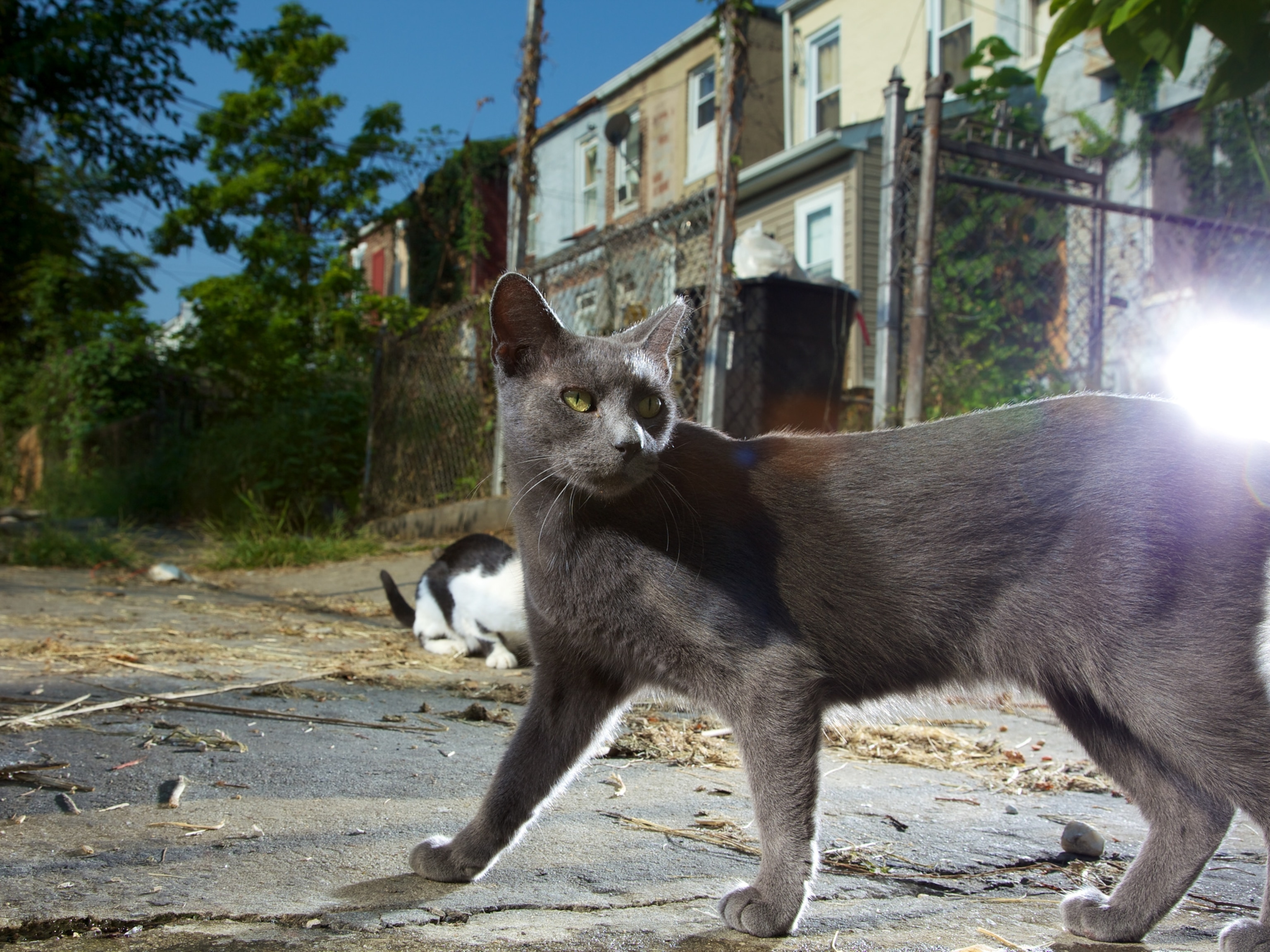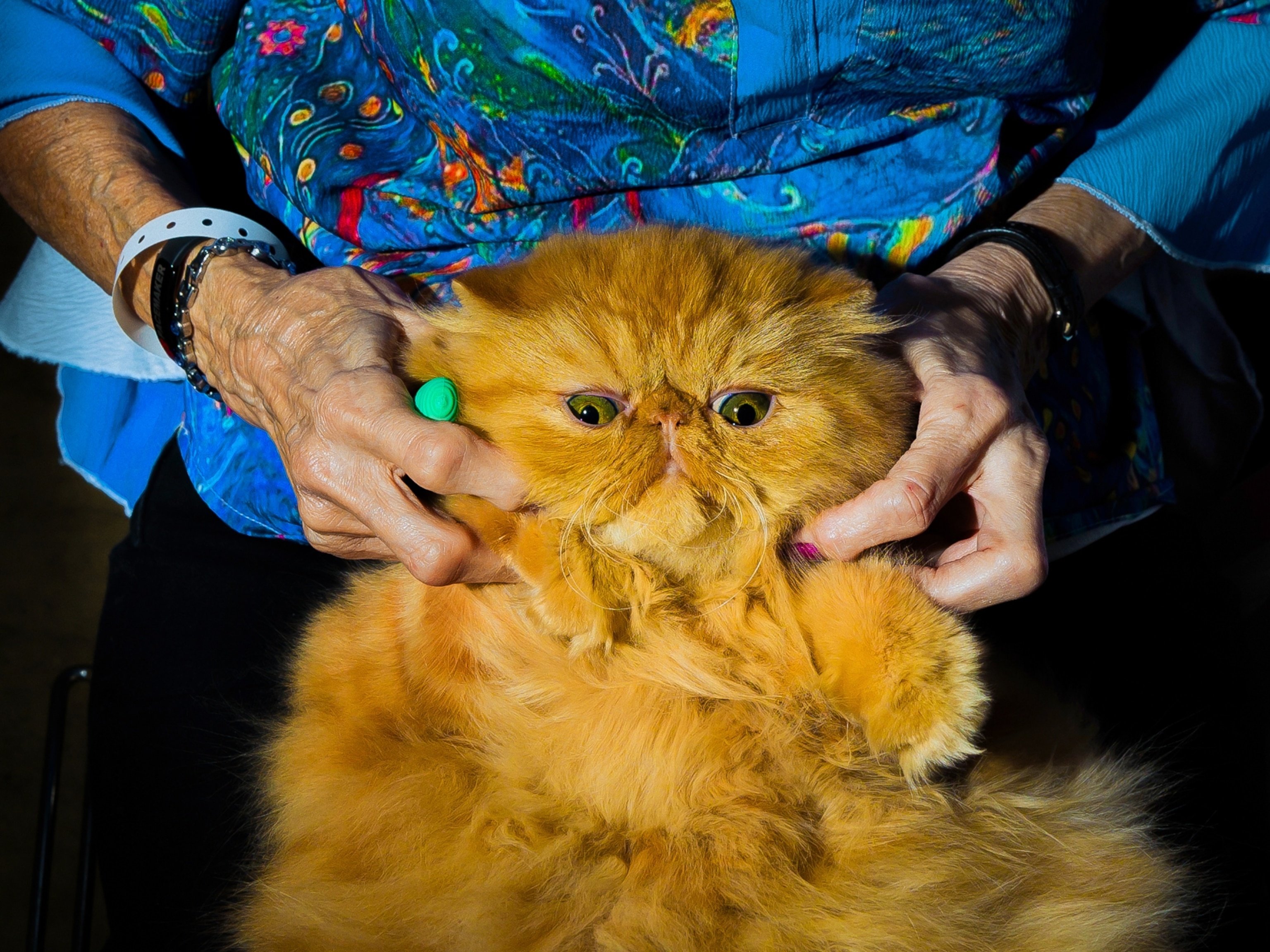
Vasectomies Could Cut Feral Cat Population
A new study suggests surgery to control mating in free-roaming felines.
Getting snipped and tying tubes isn't just for people anymore: Vasectomies and hysterectomies may be a solution for keeping free-roaming domestic cats in the United States in check, a new study says.
Over 80 million pet cats reside in U.S. homes, and as many as 80 million more free-roaming cats survive outside. How to deal with this feline explosion has caused much debate, especially between cat lovers and wildlife advocates who are concerned that cats are regularly killing birds and other animal species.
(Related: "Writer's Call to Kill Feral Cats Sparks Outcry.")
Using a computer model, the researchers found that colonies of feral cats that were trapped, given vasectomies or hysterectomies, and released (TVHR) shrank faster than colonies that were trapped, neutered, and released (TNR), a method of feral cat control promoted by many cat advocates.
Feral cats live in groups that are controlled by a dominant male. A vasectomy cuts the tube that carries sperm without removing a cat's testicles, so a vasectomized cat retains its sexual hormones. Thus, it can also keep its dominant position in the colony, so it's able to mate with females without producing kittens.
On the other hand, neutered or castrated—and thus sexually inactive—cats returned to a colony lose their position to the next most dominant breeding male. (Watch a video about the secret lives of cats.)
What's more, when a non-sterilized female cat mates with a vasectomized male, she undergoes a 45-day pseudo-pregnancy period, further reducing opportunities for reproduction, the study authors found.
The new study "looks like good science—it's kind of provocative," said John Hadidian, senior scientist for wildlife at the Humane Society of the United States.
"It has something more to add to this very controversial issue, which is what we're looking for: new ideas and new strategies."
Virtual Cats
For the study, the authors simulated a feral cat population of about 200 animals, observing them for about 6,000 days, or more than 16 years. That's longer than the typical lifetime of a feral cat—outdoor cats live an average of 3 years, while indoor cats typically reach an average age of 15 years—but the scientists needed a longer time period to observe trends.
As they ran the computer model, the team tracked each cat's behavior, adding and removing individuals as animals were born and died, according to the study, published August 15 in the Journal of the American Veterinary Medical Association.
The results showed that if 35 percent of a cat population underwent TVHR, that population would be reduced by half and would disappear in 11 years. Alternatively, if the cat population underwent TNR, 82 percent of cats would need to be captured and neutered in order to eliminate the colony in 11 years.
"We were surprised at how much better [TVHR] worked," said study co-author Michael Reed, a biologist at Tufts University in Massachusetts.
"The results are promising—now someone needs to go and test it under proper controlled conditions."
That's exactly what Hadidian suggests: Ideally, scientists could begin testing TVHR—still an uncommon practice—in a real cat colony. "You want to see how well your data begin to fit the model you've generated," he said.
Not a Cure-All
However, a potential concern with leaving cats intact is that the males will still howl, fight, and spray to mark their territories—causing complaints by people who live near colonies of free-roaming cats.
Becky Robinson, president and co-founder of the animal-rights group Alley Cat Allies, also noted that reducing these behaviors is a benefit of TNR, which her group has promoted and carried out for two decades.
The virtual-cat-colony study "demonstrates non-lethal population control working," she said, adding that some programs still catch and euthanize feral cats.
"Neutering and spaying is now becoming the norm in the U.S., and Americans support humane and compassionate programs that also work to stabilize cat populations."
Sheilah Robertson of the American Veterinary Medical Association's Animal Welfare Division also noted that "it's unlikely a single tactic will be a cure-all" for the feral-cat problem.
"Instead, a multipronged approach will be required that includes TNVR; programs that use nonsurgical approaches, including immunocontraception and chemical sterilization of male cats; and trap-and-remove. Regardless of the method chosen, it may take 10-15 years of sustained effort to see a positive effect," she said.
In general, a lot of the feral-cat debate is actually a "human conflict" between people with differing visions on how to approach feral cats, added the Humane Society's Hadidian.
But some productive dialogue is occurring between people who care about cats and those who care about wildlife, as both seem to have a common goal: to have fewer cats outdoors, he said.
"Finding new solutions like this will get us to where we want to be."





